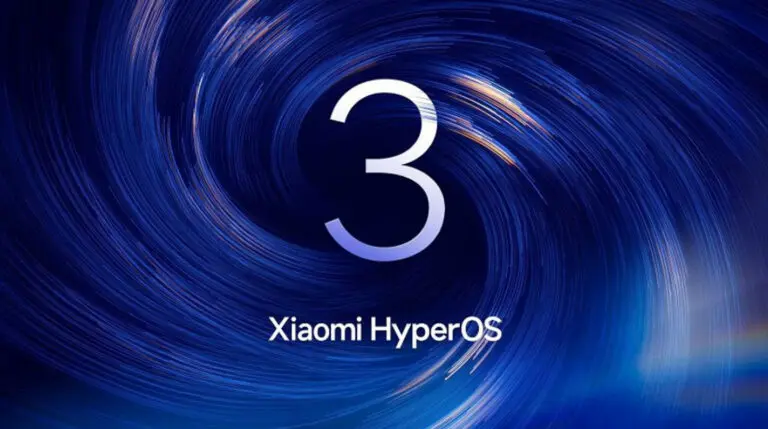Xiaomi has turned up the hype: HyperOS 3 is now official in China and arrives with a clear focus on smoothness, artificial intelligence and multitasking. The company has set August 28 as the big reveal date, while rolling out staggered betas for key models. All this happens while HyperOS 2.2 is still being deployed, so the version jump will coexist for a few weeks with the current branch, as often happens in Android.
Key updates: Super Island and more AI for everyday use
The absolute star is Super Island, Xiaomi’s new dynamic notification proposal inspired by the iPhone’s Dynamic Island, but taken further in productivity. Thanks to its multi-island technology, the system can display up to three simultaneous panels at the top of the screen, allowing you to answer a call, track an order status and check your boarding pass details without jumping between apps. Who wouldn’t want to control all of that at once without losing the thread?
In addition to viewing the panels, you can interact with them to expand information without leaving the main task, which promises to speed up workflow both for leisure and in professional environments. Xiaomi has opened Super Island to developers, so the ecosystem of widgets and live notifications should grow over time. That said, keep in mind we are talking about the Chinese firmware; in previous versions (like HyperOS 2) there were differences with the global edition, so we’ll have to wait to confirm what exactly arrives in Europe.
Beyond Super Island, HyperOS 3 adds quality-of-life improvements that respond to common community requests: customizable photo albums to quickly organize multimedia content, a shift alarm designed for rotating schedules, AI content recognition that suggests contextual apps with one tap, instant cleanup of unread messages and double-tap to lock the screen. It also integrates Super XiaoAi directly on the home screen for quicker invocation, as well as dynamic wallpapers with depth effects for pets or characters and improved translation with captions in 29 languages. This push in personalization is reminiscent, though not identical, of Android’s Material You philosophy, where the system increasingly adapts to your habits and preferences.

The large-screen experience also gets a boost: HyperOS 3 debuts a split screen that lets you adjust each app’s proportion, optimizes the browser to take better advantage of width and adds features like a weekly view in the calendar or one-touch screen recording using the back of the device. For those who switch between phone and tablet, these kinds of details make a difference for working, studying or gaming. And, as a treat for the more visual, leaks circulated in recent months about new «Glass UI» effects reminiscent of iOS’s «Liquid Glass»; although we’ll have to see what remains in the final version, Xiaomi’s approach appears to move toward smoother animations and a more modern interface.
Phones and tablets that will try HyperOS 3 in beta
Xiaomi has confirmed a phased beta roadmap in its home market. These are the first devices that will receive the preliminary version of HyperOS 3, with Android 16 on many of them:
From August 29:
- Xiaomi 15 Ultra
- Xiaomi 15S Pro
- Xiaomi 15 Pro
- Xiaomi 15
- Redmi K80 Pro
- Redmi K80 Extreme Edition
- Xiaomi Pad 7S Pro 12.5
- Xiaomi Pad 7 Pro
From September 17:
- Xiaomi Mix Flip 2
- Redmi K80
- Xiaomi Pad 7 Ultra
- Xiaomi Pad 7
- Redmi K Pad
- Xiaomi TV S Pro Mini LED 2025
- Xiaomi TV S Pro Mini LED
From September 30:
- Xiaomi Mix Fold 4
- Xiaomi Mix Flip
- Xiaomi 14 Ultra
- Xiaomi 14 Pro
- Xiaomi 14
- Redmi K70 Pro
- Redmi K70 Extreme Edition
- Redmi K70
- Redmi K70E
- Xiaomi Pad 6S Pro 12.4
Additionally, Xiaomi has stated that HyperOS 3 aims to be smoother and more useful across the ecosystem, improving how phone, tablet, TV and other brand devices understand each other. The promise isn’t only aesthetic: snappier performance, more integrated AI and genuinely practical features for daily life.
How to install the beta and what to expect outside China
If you have a compatible Chinese device, access to the first betas is done through the Xiaomi Community app and the process is quite straightforward:
- Sign in with your Mi account.
- Tap “Me” (bottom right) and go to “Prepare”.
- Go back to “Me” and open “Beta tests”.
- Enter “Recruitment for testing” and tap “Apply”; the app will detect your model.
- Follow the on-screen instructions to begin installation.
Important: for now, these betas are intended for hardware from the Chinese market. Although the company says differences between the Chinese and European firmware will be minimal and that the international rollout will be faster than on previous occasions, experience advises caution; in HyperOS 2 there were regional changes, so it’s best to wait for local announcements before drawing final conclusions.
In parallel, Xiaomi has outlined the Android version map under HyperOS 3: as has been revealed, dozens of models will receive the update with Android 15 and many others will get it directly with Android 16. In any case, the brand insists the priority is smoothness and ecosystem coherence over version numbers, aiming for your devices to “talk” to each other better, like when you sync a Bluetooth keyboard between phone and tablet or move from one screen to another without losing context, in the purest style of ecosystems geeks love.
With Super Island as its calling card and a package of improvements that looks to both productivity and personalization, HyperOS 3 aims to be one of Xiaomi’s biggest updates in recent years. Will you jump into the beta as soon as it’s available or wait for the global release?


